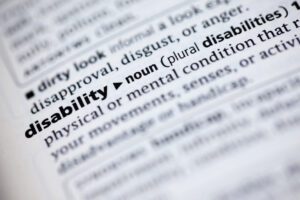
We’ve already discussed some of the perceived problems that individuals and organizations, who are working towards Long Term Disability, had with DSM-IV and why the switch was made to DSM-5. The hope was that by implementing some of the more recent research and making certain structural changes to the Diagnostic and Statistical Manual of Mental Disorders, professionals would be better able to identify and treat the problems of patients.
Call or text (800) 562-9830 or complete a Free Case Evaluation form
Of course, that’s the goal with every new version of the DSM. Whether or not it is actually successful at doing this is something that only time can tell. The thing that is important for those filing disability claims to know is how the changes might impact their ability to get the benefits that they need. In order to do that, they have to understand what kinds of changes were made.
An Overview of Changes from DSM-IV to DSM-5
It would be impossible to go over every single change in DSM-5 without writing an entire book but below you’ll find the big-picture differences. In the future, we’ll cover some of the specific changes in more depth.
- Axis I – Axis V has been completely removed. The DSM-IV divided disorders into four Axes (Clinical disorders, Personality/developmental disorders, Relevant physical disorders, and Psychosocial and Environmental problems), with a fifth (Global assessment of functioning) set aside to rate their ability to function. These categories no longer exist.
- Several new diagnoses have been added. Some of these are updates, where an old diagnosis has been given a new name and definition, while others are entirely new.
- Several old diagnoses have been excised. Certain conditions have been changed and some have been removed completely.
- A new section has been added: Section II – Emerging Models and Measures. This section is designed to make professionals aware of the newest methods that are being used to diagnose and treat individuals.
- An attempt has been made to combine the DSM’s Set of Categorical Diagnoses with a dimensional approach. Whereas categorical diagnoses simply say that a person does or does not possess a characteristic or trait, a dimensional approach examines the degree to which individuals display that trait.
For a free legal consultation, call (800) 562-9830
If you’re attempting to get disability benefits, it is vital that you work with someone who understands these changes and how they will impact your claim. An experienced long term disability attorney will be familiar with all the latest updates and know how to make sure the evidence you present is focused on showing what you need to win and get the benefits you need.
Learn more about how disability insurance policies work in our free eBook, and then give us a call.






